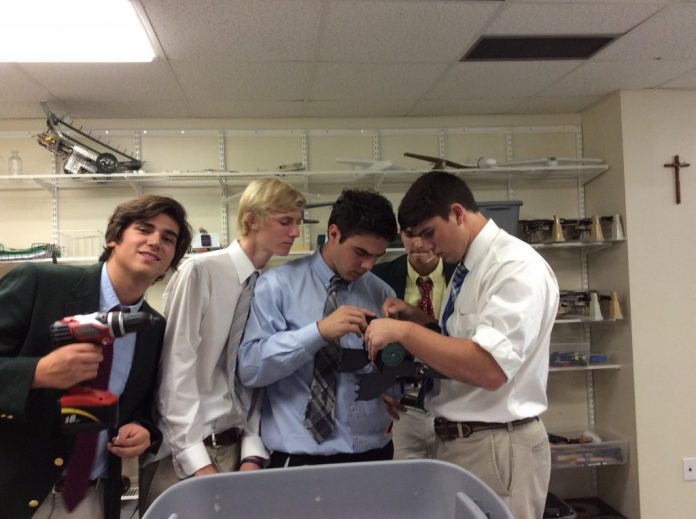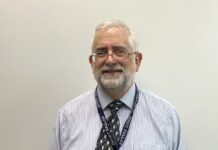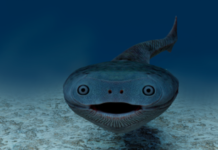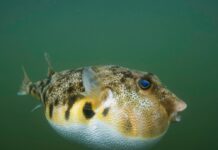“The Jesuit Engineering PMM course explores some of the most dynamic topics in engineering today. Throughout the course, students probe underlying issues to complex problems including the global energy crisis, public policy as it relates to advancements in medical research, and the impact of emerging technologies on various economies. In addition, students will strengthen their leadership, communication, and teamwork skills through project designs, rapid prototyping, and research presentations. This course challenges students to look for positive contributions they can make to the global community.”
The above statement by Engineering PMM teacher Mrs. Julie Carver could not be more true, as evidenced by the 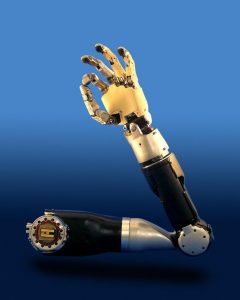 Prosthetic Arm Project completed by seniors in the Engineering PMM Course.
Prosthetic Arm Project completed by seniors in the Engineering PMM Course.
Over the course of an entire Biomedical Engineering unit, students study a multitude of topics, including biomedical biomutualism, robot assisted surgery, prosthetics, preconditioning, and targeted muscle reinnervation, with a focus on real-world applications of their research.
“It’s a pretty comprehensive unit,” commented Mrs. Carver. During the Biomedical Engineering unit, students first “look at biomedical research, or how nature inspires engineering designs,” examining how tissue regeneration in humans can be augmented by the concept of lizards regrowing their tails.
However, students don’t stop there. Mrs. Carver places a heavy focus on the “global impact of [their] studies,” hoping for her students to be able to see the big picture, rather than just the labs in school. In this case, students must analyze “why environmental regulations are critical…and what regulations must be put into place” for experiments to be successful.
For the culminating project of the unit, the students build a human prosthetic arm.
The students begin the project by looking at the history of prosthetics, as well as modern designs. Then, they complete a “structure and function lab,” which entails dissecting a chicken wing and examining “how the limbs are hooked together, how the tendons and muscles are held together,” explained Mrs. Carver. Finally, they apply their physics knowledge to these findings to completely familiarize themselves with the concept of constructing a human arm.
The guidelines for the project are fairly simple. The students are not allowed to use any kits or custom pieces to build their prosthetic, the prosthetic arm must have two points of articulation, or hinges, and it must resemble a human arm as closely as possible.
Seniors Sean Alexander, Sterling Coker, and Joseph Ponder were recognized for their prosthetic arm, not for its aesthetic resemblance to a human arm, but for its remarkable capability to lift more weight than any other arm.
Sean Alexander explained, “I definitely believe the combined research of biomedical engineering and physics were helpful because [they] helped us to create different advantages to make the arm more efficient.” Additionally, Sean explains,

“these types of projects in class are great, because they help me to decide which type of engineering I want to go into.” Sterling Coker also enjoyed the Prosthetic Arm Project, explaining that “the prosthetic arm project is a great introduction to PMM Engineering.”
If you are a junior interested in both medical research and physics, consider enrolling in PMM Engineering next year.


